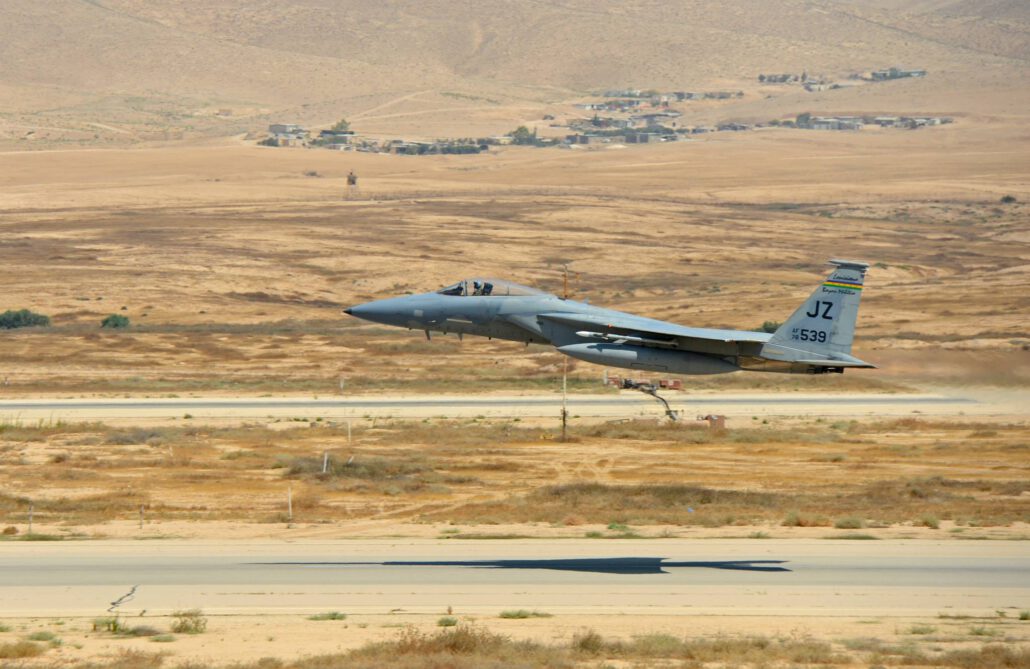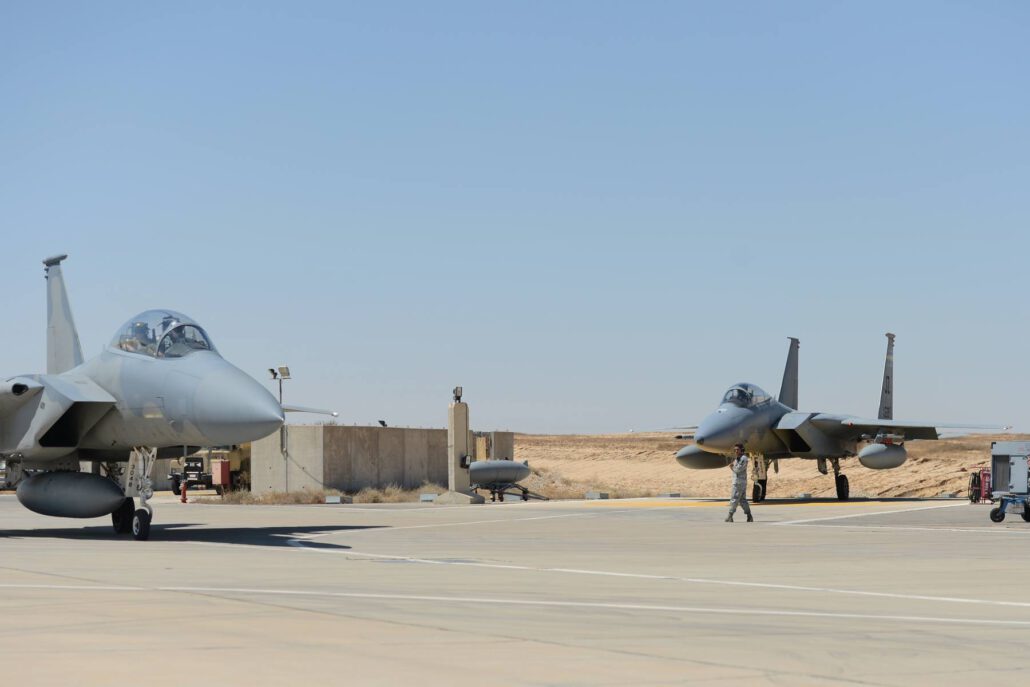“Coonass Militia”
Eagle History
The 122nd Fighter Squadron is stationed at NAS New Orleans, Louisiana. The 122nd was the first ANG unit to receive the F-15A/B’s in August of
1985 the “Coonass Militia” started replacing the F-4C’s. The F-15A’s came from the 405th TTW from Luke AFB. The 122nd TFS was to be the proving ground for F-15 usage within the ANG. The F-15’s deliverd to the 122nd TFS were “old” and some in bad shape. Furture more the squadron experienced fuel corosion problems due to the usage of JP-5 fuel, were the F-15As were customed to the JP-4 type. In 1991 al of the “Coonass Militia” jets were replaced with FY77 model F-15A’s from the 49th Fighter Wing out of Holloman AFB.





ANG F-15C Eagle inserts air-to-air fight into Red Flag puzzle
By Tech. Sgt. Frank Miller, 20th Fighter Wing Public Affairs
NELLIS AIR FORCE BASE, Nev. — When assembling a puzzle, a strategy sometimes used would be to build the edge pieces first to frame the overall image. The air-to-air combat role provided by the 122nd Fighter Squadron’s F-15C Eagles, assigned to the 159th Fighter Wing, Louisiana Air National Guard, would be an edge piece to the Air Tasking Order puzzle. The role they perform shapes the air picture for the entire mission.
“Our job is to maintain air superiority by cleaning out the initial air picture of whatever aircraft the enemy has airborne, focusing specifically on the areas we need to get to or through,” said Lt. Col. Daniel Fischer, 122nd FS commander. “The F-15C is the world’s greatest fourth generation air superiority fighter with a record of 104 air-to-air kills and zero air-to-air loses and is a combat proven aircraft designed specifically for the role of air-to-air superiority.”

Though the F-15C Eagles have undergone many modifications and improvements over the years, they only have one seat whereas the F-15E Strike Eagles have a seat for a pilot and a weapon systems officer.
“The main difference between the F-15C Eagle and the F-15E Strike Eagle is the E model has the capability to perform air-to-ground meaning they drop the “B” word – bombs – we don’t do that in the F-15C, we are strictly air-to-air,” said 1st Lt. Thomas Henderson, 122nd FS pilot. “F-15Cs shoot the bad guys in the air and maintain air superiority and once we clean out the air picture, the Strike Eagles go in unhindered to put bombs on targets.”
It requires a group effort to keep enemy aircraft away from strikers when conducting offensive-counter-air missions or away from defended assets when conducting defensive-counter-air missions. OCA is leading strikers to the target and DCA is protecting assets or group of assets on the ground or it could be an airborne asset like the E-3 Sentry.
“At Red Flag it takes an integrated effort because we are surrounded by the enemy airfields, surface-to-air missiles, and integrated air defense systems which is challenging,” said Fischer. “The exercise mission planners make it difficult because they located the targets, the SAMs, and the airfields all in a very small space which forces us to work together in doing our various roles in a way to gain a mission success.”
With any puzzle there are pieces which could be forced into places where they are not designed to go, the same concept applies to aircraft roles during a mission. The overall picture will be clearer and go smoother when all involved are able to fit into specific assigned roles.
“Most of the strike aircraft involved in this exercise along with the 55th Fighter Squadron who are performing suppression of enemy air defenses carry the advanced medium range air to air missiles and are multi-role capable,” said Fischer. “The goal is for them not to worry about air-to-air threats; I want them to worry about suppressing the surface-to-air-missile systems and 100 percent destruction of their assigned targets.”
Once the immediate threat is removed a pilot’s skill is tested by engaging multiple waves of enemy aircraft from nearby simulated enemy airfields.
“If the enemy decides to launch more hostile aircraft which then becomes a factor, we need to take those down as well,” said Fischer. “At Red Flag we do all that in a very busy, contested, environment and then lead the way out.”
Once the objective of the mission has been met, the F-15C takes the lead in forging a safe path back home for U.S. and coalition forces.
Red Flag 16-4 sponsored not only U.S. service members from every military branch but combat air forces from multiple nations as well who brought various types of assets to create a coalition alliance.
Red Flag is one of the premier exercises in the world which provides first time attendees like Henderson exposure to coalition partners.

“The best part of working with multiple nations is getting back down on the ground after a successful mission and giving my wingmen high fives,” said Henderson. “Our coalition allies want to go out there, execute the mission, and come back alive just like we do. It’s crucial everyone knows their part, so to see them as committed as we are creates lasting bonds between us.”
The 122nd FS experienced lessons they could not receive at home station and the expectations brought to Red Flag were met.
“I expected there would be a lot of learning opportunities and good training at Red Flag. But being able to see the amount a jets taking off for just from one sortie is something I’ve never experienced before and will always remember,’ said Henderson. “Listening to all of the communication between players, the Air Tasking Orders, and then working with people you never met before was the biggest lesson I was trying to get out of Red Flag.”
Squadron photos

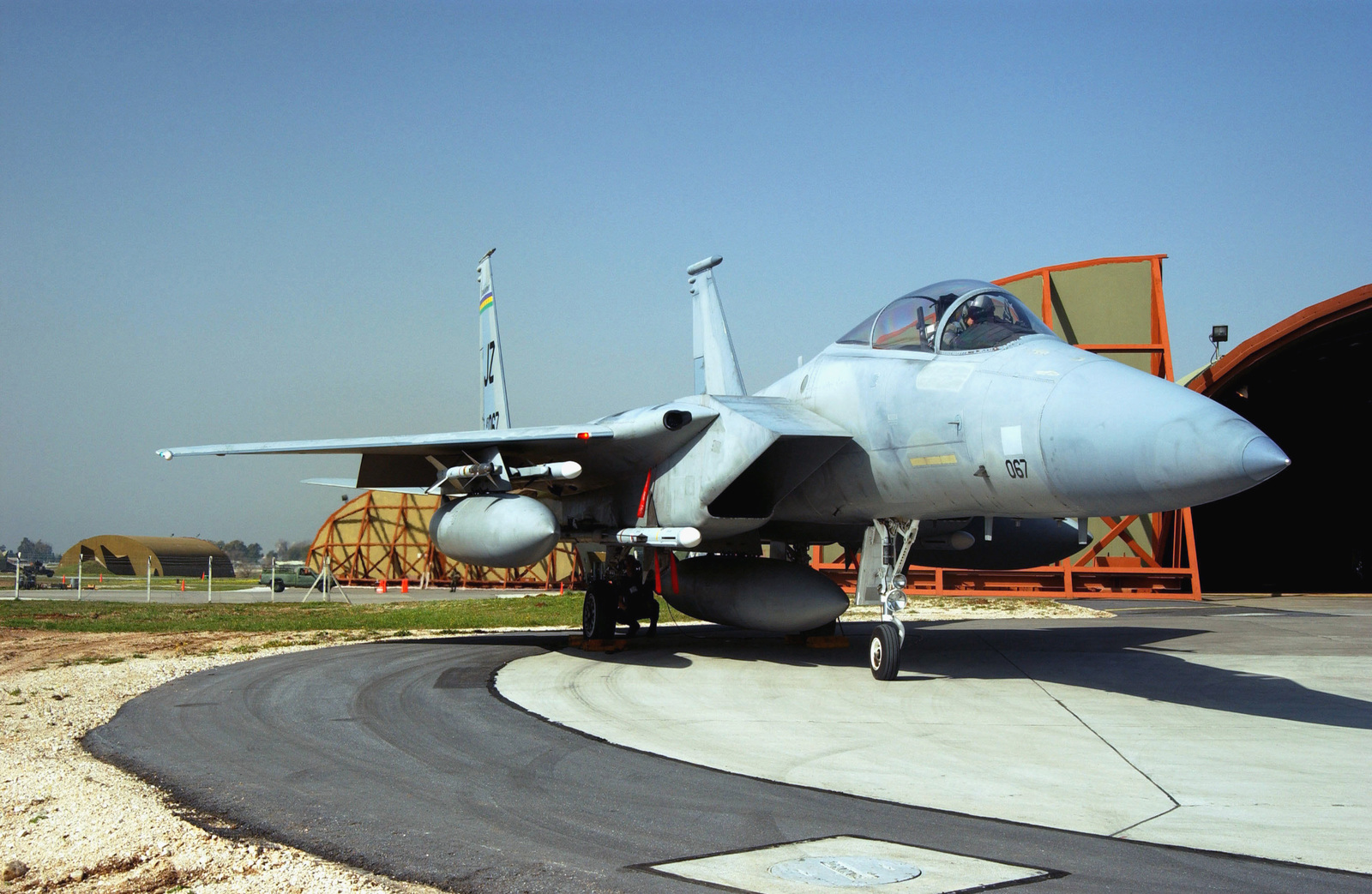

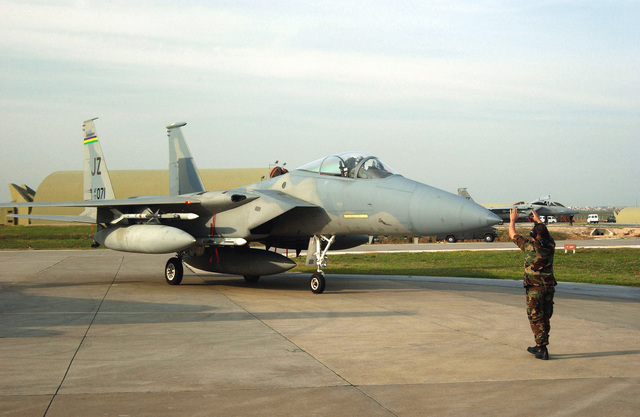

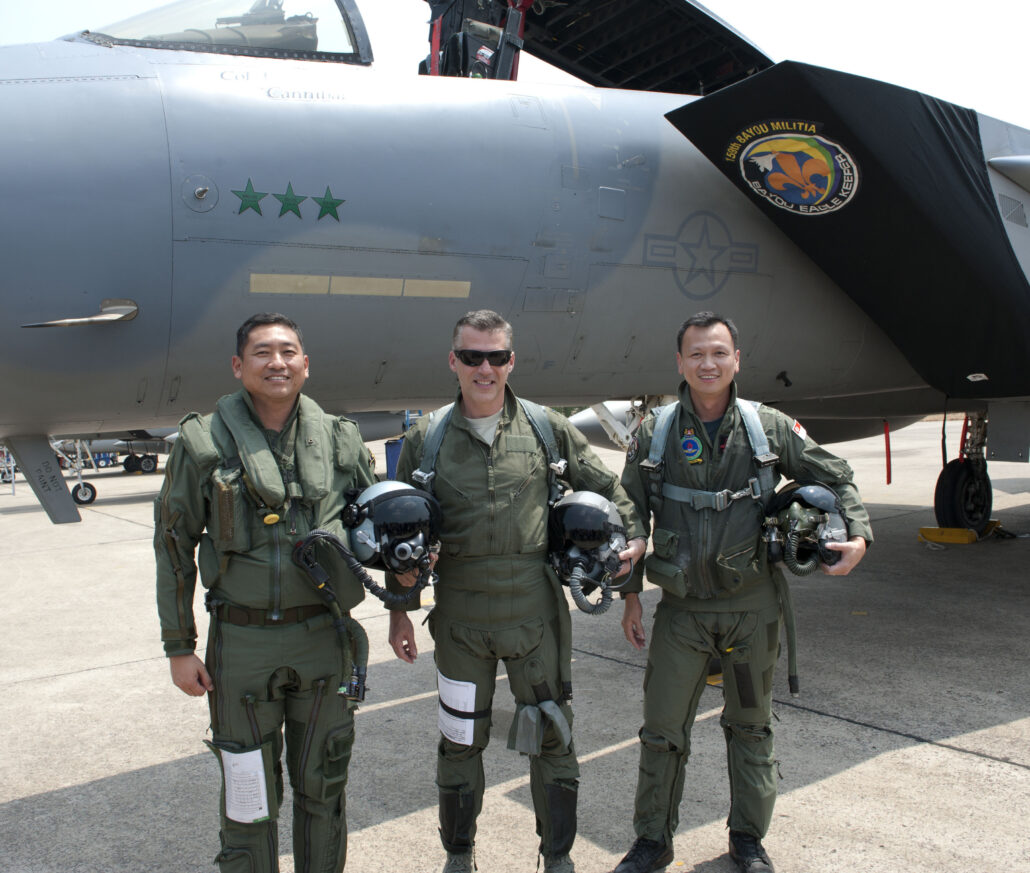







Juniper Stallion 2013
NEVATIM, ISRAEL – The Louisiana Air National Guard Airmen with the 159th Fighter Wing train with Israeli Air Force during Juniper Stallion 2013, Nevatim Air Base, Israel. The training mission is a combined, bilateral F-15/F-16 air-to-air exercise designed to improve the interoperability and cooperation between the U.S. and Israeli Air Forces in southern Israel.

